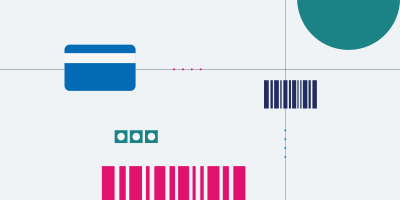
The Most Common Content Challenges of E-commerce

Shopping online has its advantages. You can browse 24/7 and quickly compare prices. You can also avoid crowds and skip the hassle of traveling to and from the store or mall. But all of these conveniences come with a big sacrifice: no direct experience with the product before purchase.
To make up for it, brands must use content to convey the value of their goods or services. Detailed photographs, short-form videos, descriptions, and specifications shape a shopper’s perception of the inventory. And, when all of this content is combined, they walk away with a strong sense of the product.
Managing all this content for an entire product inventory is no small task, though. Let’s take a look at some of the common challenges that businesses face when developing content for digital commerce.
1. Managing product information at scale
Regardless of your business size, effectively managed product information is critical for retail success. As your business grows, so does the inventory and data for each product or service. Fortunately, you have unlimited space to sell goods and services online.
But, remember: The more sophisticated your offerings, the more information you’ll need to provide. A shopper needs less information about a T-shirt, for example, than electronic products or B2B manufacturing parts. The variety of product attributes can further complicate your data.
The number of destinations is another factor in scaling your digital commerce business. In addition to your own website, you may sell your products on marketplaces that have different standards for product information. You may also use social media platforms to advertise and sell your products.
2. Sharing consistent product information across teams
Best-selling products usually owe their success to the combined efforts of many different people. Marketing, product development, photography, copywriting, SEO, and other technical and creative skills often span teams throughout an organization. Some of these contributors could even be external partners.
Making sure that all stakeholders are on the same page and have access to accurate, up-to-date product information in real time is one of the major e-commerce challenges that many retailers face.
3. Product lifecycle inefficiencies
Finding a balance between rapid production and quality is challenging. Developing new products and then creating accurate, attention-grabbing listings takes time, but if you take too long, your inventory has fewer days, weeks, or even months available for consumers to make purchases. Lost time can add up to a lot of missed revenue. But rushing the process increases the risk of dismal customer satisfaction (and fewer future sales or loyal customers).
4. Reducing cluttered digital assets
It takes a variety of digital assets to attract, convert, and delight customers. Lifestyle photographs, brochures, how-to videos, infographics, diagrams, and so on all play a role in communicating the value of your products. Producing a variety of these digital assets can help you quickly adapt to changing consumer trends. While having all of that content at your disposal is essential (and effective) for promoting products, a sea of digital assets scattered across multiple platforms can make it difficult to keep everything organized and quickly accessible for stakeholders to use. To get the most out of your digital assets, it’s imperative to keep everything easily accessible and organized in a logical manner.
5. Importing and exporting data
With a multitude of teams and tools required to create and market products, it’s important to protect the integrity of product information shared across systems. Importing and exporting data can be time-consuming and leave you vulnerable to data-entry errors. Aim to have one source where data can be edited and then sync that data across other systems.
6. Choosing the right digital commerce tech stack
Finding the right solution to keep your content organized, accessible, and shareable can be the key to your commerce site surviving and thriving. Sifting through the number of options available can be an intimidating task, so it’s important to find partners you can learn from and trust. If you’re looking for an all-inclusive content solution that can take your brand to the next level, Acquia offers a combined digital asset management (DAM) and product information management (PIM) solution that takes the guessing game out of content management. Request, watch, or click through a demo today.
Or, if you’re looking to create a full commerce solution — including content management, personalized shopping experiences, payment gateways and more — explore Acquia’s composable commerce solutions.




